Leaves of the Trees
/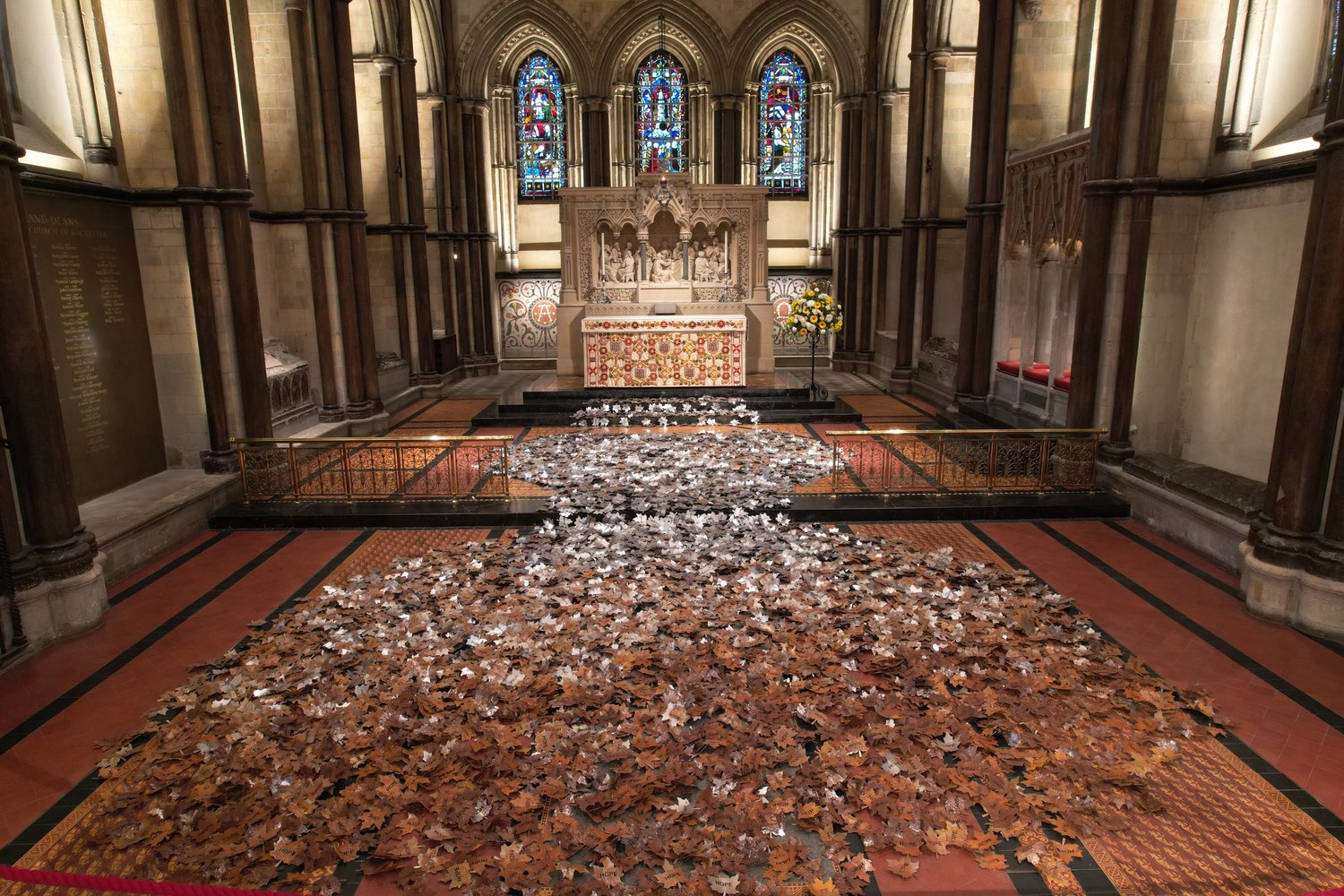
Leaves of the Trees
24th April to 22nd May 2022
Leaves of the Trees saw the east end of the Cathedral carpeted with 5,000 metal leaves as part of an art display by Peter Walker.
The Leaves of the Trees is a reflective memorial to the coronavirus pandemic. It is a simple but moving artwork which creates a moment of connection and calm. The artwork is made up of 5,000 steel leaves, each with the word HOPE engraved, which will be displayed in the Quire. The leaves give the impression they are autumn leaves fallen from the trees. The leaves symbolise the past but also hope for the future, as the shape of the sycamore maple leaf has been chosen because it symbolises strength, protection, eternity and clarity. Over time the steel will be allowed to gradually change colour to rusted tones.
The Leaves of the Trees installation at Rochester Cathedral. Video by Geoff Watkins, Aerial Imaging South East.
The project is designed to link directly to the sentiments of those who have experienced the pandemic, both those who have lost loved ones and those additionally or personally affected. The installation is designed to allow individuals, families and communities to take time to consider the past periods of lockdown and isolation and provide a focal point for their thoughts and personal reflections.
Dean of Rochester, The Very Rev’d Dr Philip Hesketh says:
“Peter has produced an evocative and moving piece of work which captures the experience of Autumn fallenness whilst been energised by the hope of the coming Spring.”
The Leaves of the Trees has toured several cathedrals over the past couple of years including Exeter Cathedral and Lichfield Cathedral.
This is not the first time Peter Walker has worked with Rochester Cathedral. In October 2021, he transformed the Cathedral with his spectacular sell-out lightshow ‘Space Voyage’. He is an internationally renowned sculptor and artist.
A Reflection by Canon Chancellor The Revd Canon Dr Gordon Giles
The changing colour of leaves is a natural process. Yet leaves are not green. Their natural colours are orange, yellow, gold, brown. The green we see (symbolised in the artwork by the silver colour of steel) is produced by the production of chlorophyll, which is the chemical ‘food’ produced by trees as the result of photosynthesis, which itself is the natural process whereby plants can convert sunlight into nutrients. Chlorophyll is the green pigment that plants need to convert carbon dioxide and water, using sunlight, into oxygen and glucose. It is a remarkable and seemingly miraculous process without which most other lifeforms could not exist. Omnivores much as ourselves eat green plants as well as meat, but other species are either herbivores that eat green plants or carnivores which eat herbivores. Photosynthesis ignites and illuminates the whole food chain. We might say that the divine creative ‘fiat lux’ (‘let there be light’), set in motion a chain reaction of its own whereby the light of God sustains life, through a biochemical process without which, nothing.
In seasonal climates where sunlight varies through the year, there are periods - autumn and winter – when the light fades and the production of chlorophyl cannot be sustained in a large organism such as a tree. A deciduous tree cannot make enough food for itself and so shuts down and the chlorophyl drains from its green leaves, revealing their true colours underneath. As the chlorophyll fails, the tree produces anthocyanins which produce a red colour. At different stages of the leaf life cycle the tree can have green, yellow, orange or red leaves and as some trees produce anthocyanins more quickly than others, some miss out some of these colours, which is why in autumn there is a vast diversity to beguile the eye. Nevertheless, the leaves do eventually die, and turn brown and fall. If autumn is particularly cold this can happen swiftly.
When contemplating the ‘Leaves of the Trees’ installation we might wonder, and reflect on whether we should be seeing these leaves on the ground as dead leaves that have fallen, to decay and rust on the ground, to return to earth. As the rust forms we might remember that just as real leaves need to convert carbon dioxide into oxygen to feed themselves through the process of photosynthesis, rusting is a process of oxidisation. The iron in the steel leaves reacts with both oxygen and water (each present in the air) to create iron oxide (Fe2O3). Water (which is the combination of hydrogen and oxygen) is an electrolyte, which means it helps electrons flow. When a piece of metal rusts, the water helps provide oxygen to the metal surface (known technically as an anode). As oxygen combines with the metal, electrons are liberated and as they are borne away by the water they become positively charged. So the water combines with carbon dioxide in the air to form carbonic acid, an even more effective electrolyte. The acid dissolves the iron and some of the water will break down into hydrogen and oxygen. The oxygen released blends with the dissolved iron, freeing electrons. These freed electrons can settle on another point on the piece of iron creating what we call rust.
This poses the question as to whether the rusting of metal leaves, or the browning of the leaves of trees is something by which we may be comforted, inspired or confused. The coronavirus pandemic has left many scars and much death. Now the rains of the pandemic have subsided a little do we simply consign the past two years to floods of forgetfulness, and move on, leaving our griefs, struggles and sorrows to quietly rust or decay into the ground? Does this rust reflect the passing of time, over which everything decays – a process known as entropy? From dust we came and to dust we shall return. Do we, like Job ask, “Remember that you fashioned me like clay; and will you turn me to dust again?” (Job 10:9). Is the pandemic a blot on recent history, which has taken its toll and our memories which soon will have rusted away? Do we move on so quickly? Are we to remember, like the psalmist that:
You turn us back to dust,
and say, “Turn back, you mortals.”
For a thousand years in your sight
are like yesterday when it is past,
or like a watch in the night.
You sweep them away; they are like a dream,
like grass that is renewed in the morning;
in the morning it flourishes and is renewed;
in the evening it fades and withers.
(Psalm 90:3-6)
The leaves rusting on the ground ask us these questions, and as they react with the water and oxygen in the air, they query life itself. They expose us to the faith which may have been challenged; the love we have shared and perhaps lost, and they confront us with what happens if we lose hope. Yet they may remind us of the words of St Paul to the Romans:
I consider that the sufferings of this present time are not worth comparing with the glory about to be revealed to us. For the creation waits with eager longing for the revealing of the children of God; for the creation was subjected to futility, not of its own will but by the will of the one who subjected it, in hope that the creation itself will be set free from its bondage to decay and will obtain the freedom of the glory of the children of God. … For in hope we were saved. Now hope that is seen is not hope. For who hopes for what is seen? But if we hope for what we do not see, we wait for it with patience.
(Romans 8:18-21, 24-25)
And he goes on to say:
What then are we to say about these things? If God is for us, who is against us? …It is Christ Jesus, who died, yes, who was raised, who is at the right hand of God, who indeed intercedes for us. Who will separate us from the love of Christ?... No, in all these things we are more than conquerors through him who loved us. For I am convinced that neither death, nor life, nor angels, nor rulers, nor things present, nor things to come, nor powers, nor height, nor depth, nor anything else in all creation, will be able to separate us from the love of God in Christ Jesus our Lord.
(Romans 8:31, 34, 37-39)
When we see those leaves on the ground we are reminded of the natural processes of creation, which puts leaves on the trees for the healing of the nations and for the nourishment of plant and animal life. And we are reminded that all leaves revert to their natural state, drop and decay, their russet colours dissolving into the ground. Yet there is the hope of another year, another rebirth, another resurrection. Year by year we welcome spring, and the joy of Easter resurrection that accompanies it in the Northern Hemisphere. Whatever has happened, we can look back with reflective sorrow, as is both natural and right, and we inoculate our beloved memories from the rust of despair; but we also look to the photosynthetic light of Christ, who daily feeds our beautiful multi-coloured bodies and souls with the glorious hope of resurrection life.
The Reverend Canon Dr Gordon Giles
April 2022
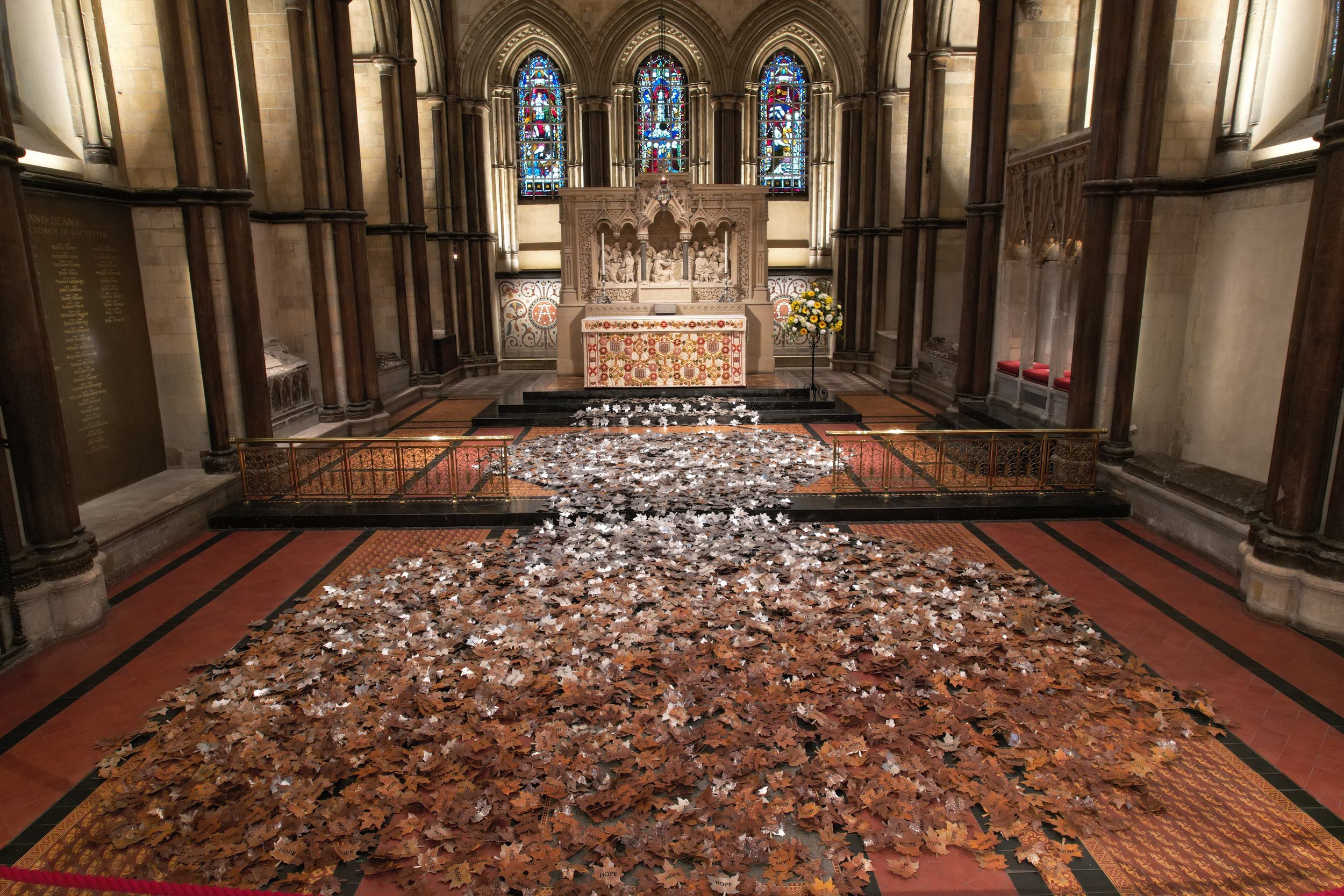
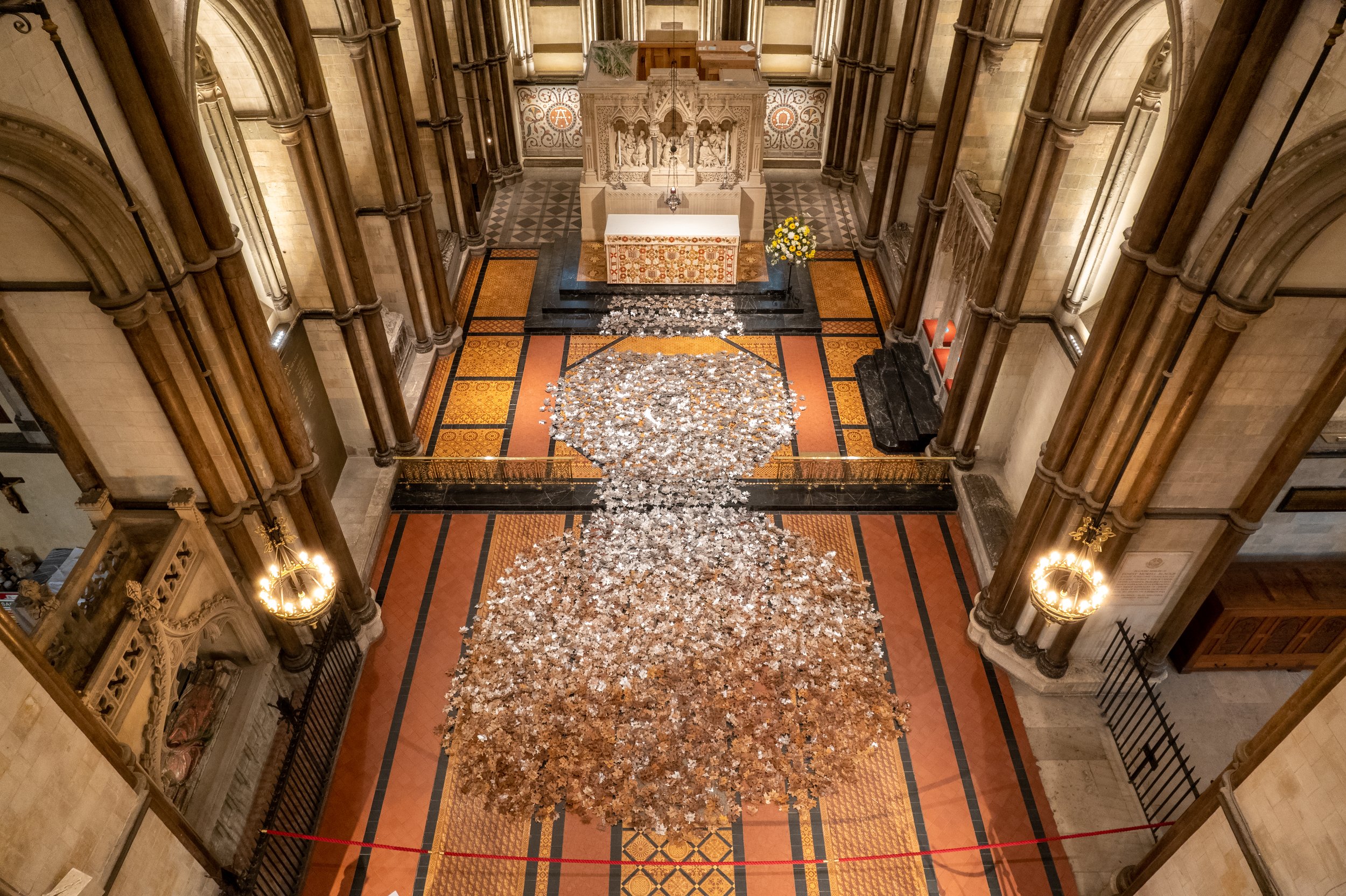
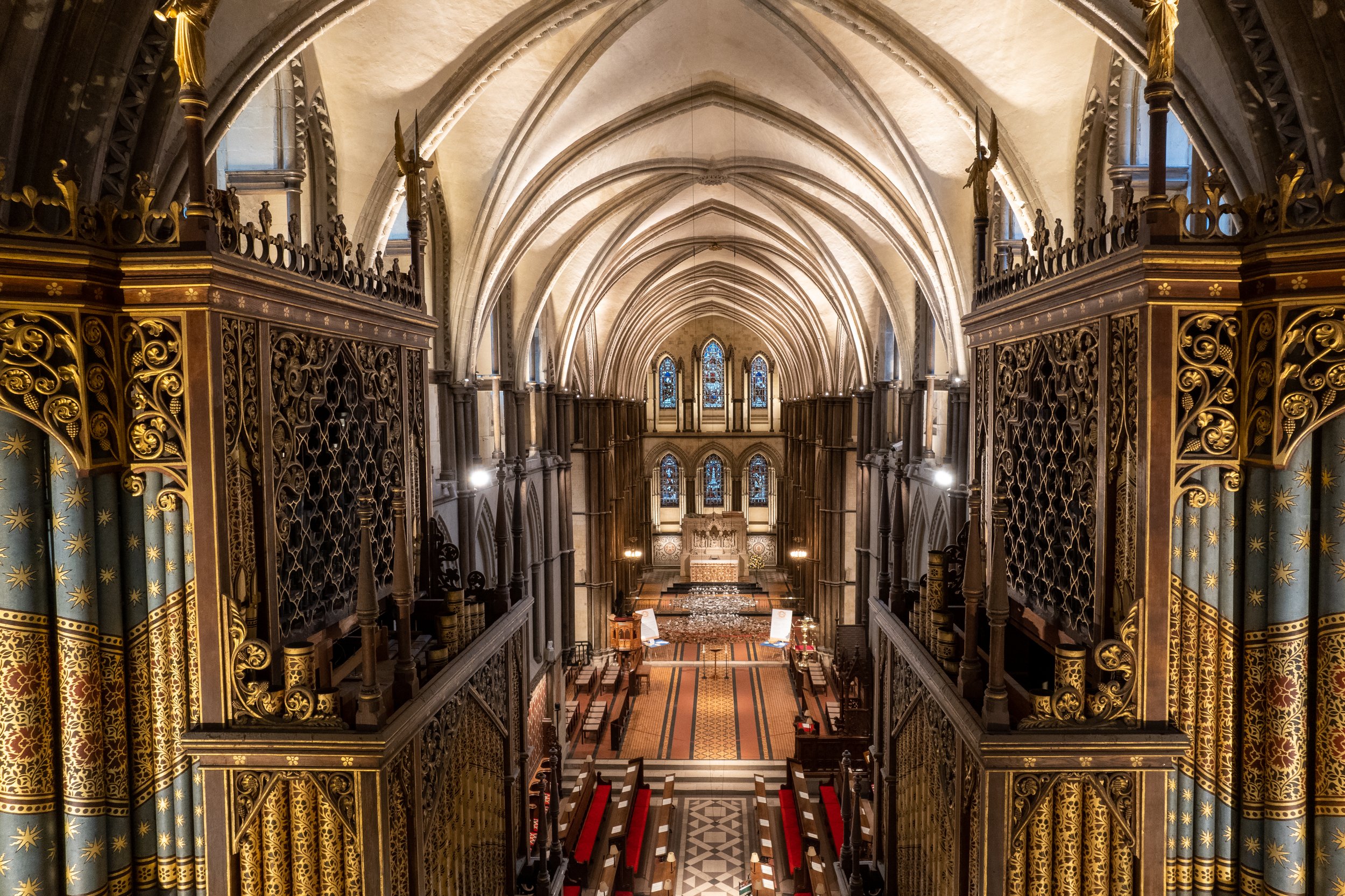
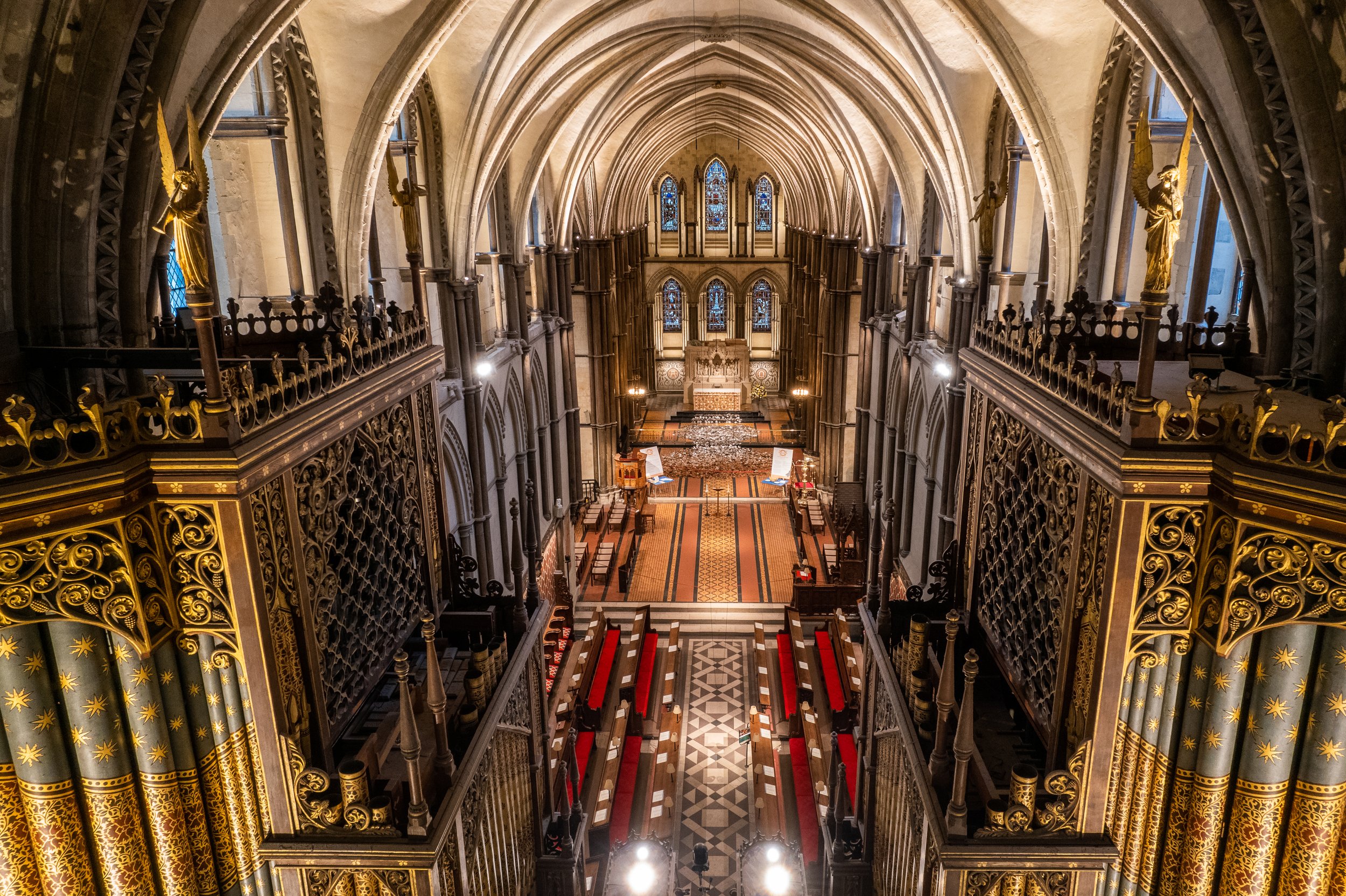
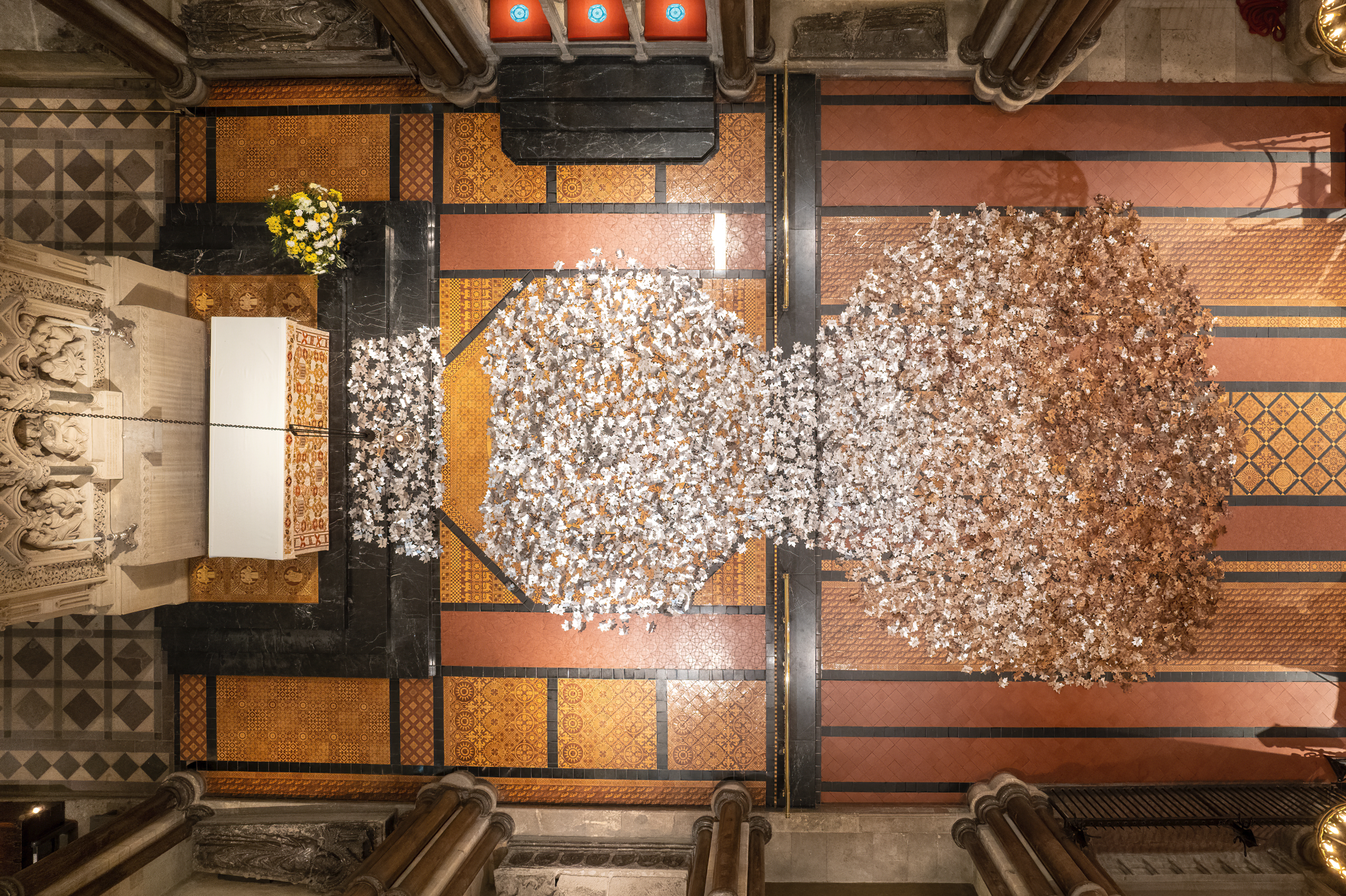
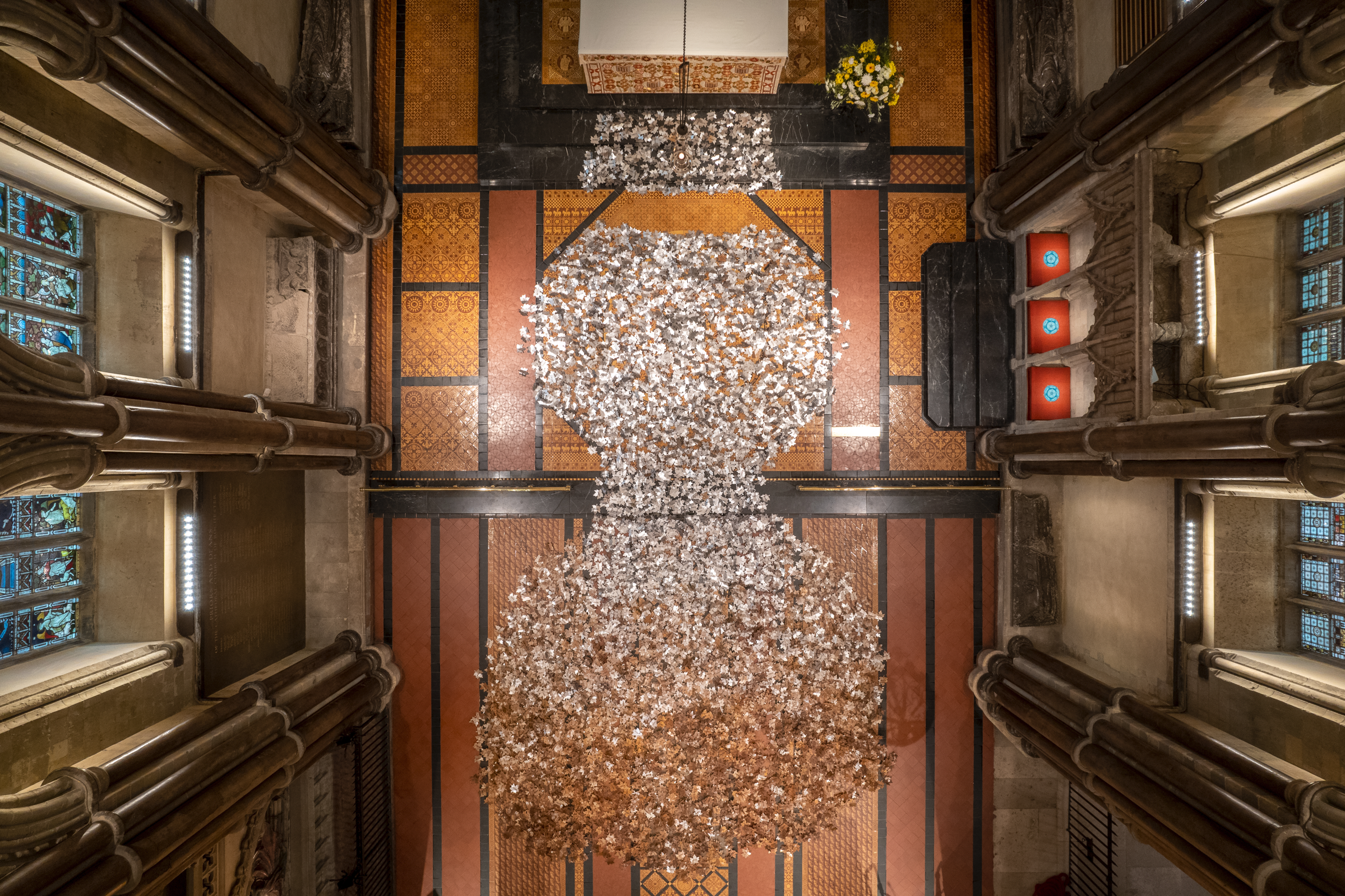
Photography by Geoff Watkins, Aerial Imaging South East.
A hymn
There in God’s garden stands the tree of wisdom
Whose leaves hold forth the healing of the nations:
tree of all knowledge, tree of all compassion,
tree of all beauty.
Its name is Jesus, name that says ‘Our Saviour’:
there on its branches see the scars of suffering:
See where the tendrils of our human selfhood
feed on its lifeblood.
Thorns not its own are tangled in its foliage;
Our greed has starved it, our despite has choked it;
Yet, look, it lives! Its grief has not destroyed it,
nor fire consumed it.
See how its branches reach to us in welcome;
Hear what the voice says, ‘Come to me ye weary:
Give me your sickness, give me all your sorrow:
I will give blessing’.
All heaven is singing, ‘Thanks to Christ whose Passion
offers in mercy healing, strength and pardon:
peoples and nations take it, take it freely’.
Amen, my Master.
Words by Erik Routley (1917-82), based on the Hungarian of Pécseli Király Imre (c.1590-c.1641)
About the artist
Peter Walker is an internationally renowned sculptor and artist. Peter is a Fellow of the Royal Society of Arts and member of the Royal Society of British Sculptors. Producing sculptures, paintings, drawings, installation pieces, and Son-et-Lumiere for large scale public art events, his extensive creative ability has led him to produce many bronze public statues permanently located around the country and have works in private and public collections worldwide.
Peter is currently the Artistic Director as well as resident artist at Lichfield Cathedral and consults with other UK Cathedrals on visionary and unique artistic programmes that he creates specifically for them. 2019 Programme - Journeys Through Space Light and Time is currently shortlisted for the Partnership of the Year at the Museum and Heritage Awards 2020. Furthermore, working with as lead artist and Director for an artistic collaboration known as ‘Luxmuralis’ Peters artwork is used to transform architectural buildings with spectacular sound and light shows. Most recently Peters work has been seen at Westminster Abbey, Chatsworth House, Salisbury Cathedral (amongst many other Cathedrals across the UK, and abroad in Germany, Italy and Dubai).
Peters Installation and sculptural artwork transforms spaces and places, with the Artist viewing every space indoors and outdoors as a potential gallery creating art accessible for all demographics, engaging young people, informing school educational programmes, reaching wide audiences internationally and providing opportunities for the arts for all ages. Using traditional techniques in a way that offers unique and contemporary ways to communicate to the viewing public often results in evoking powerful emotion, wonder and awe in the viewer.
The Cathedral hosts several large exhibitions and smaller installations each year from education to art and everything in between.






